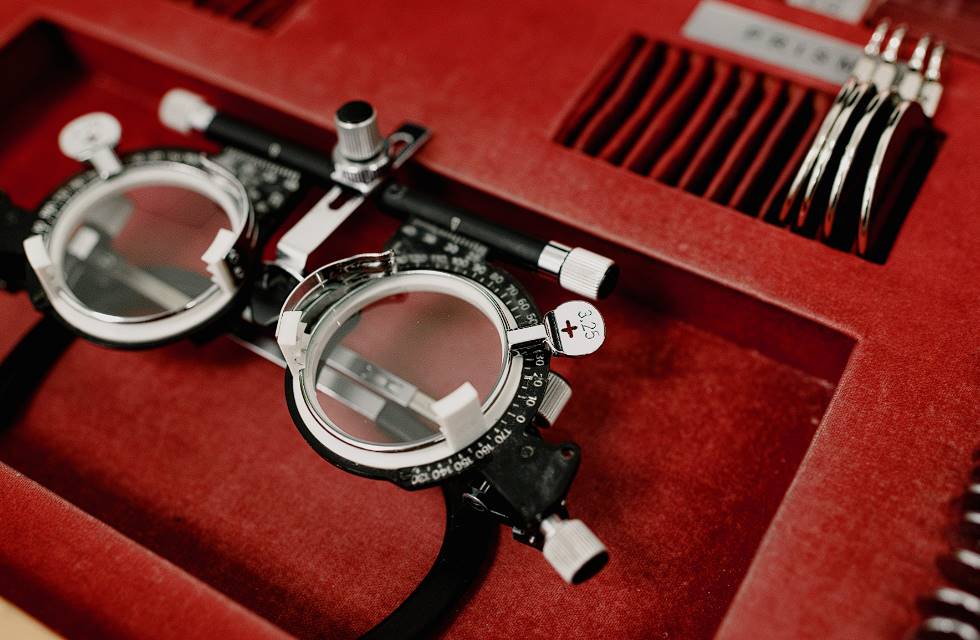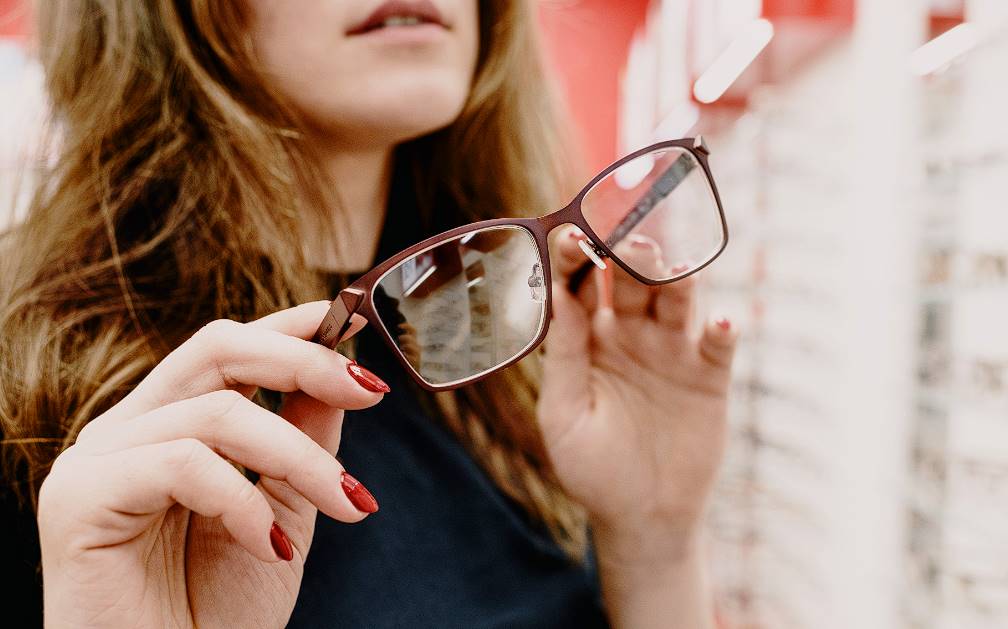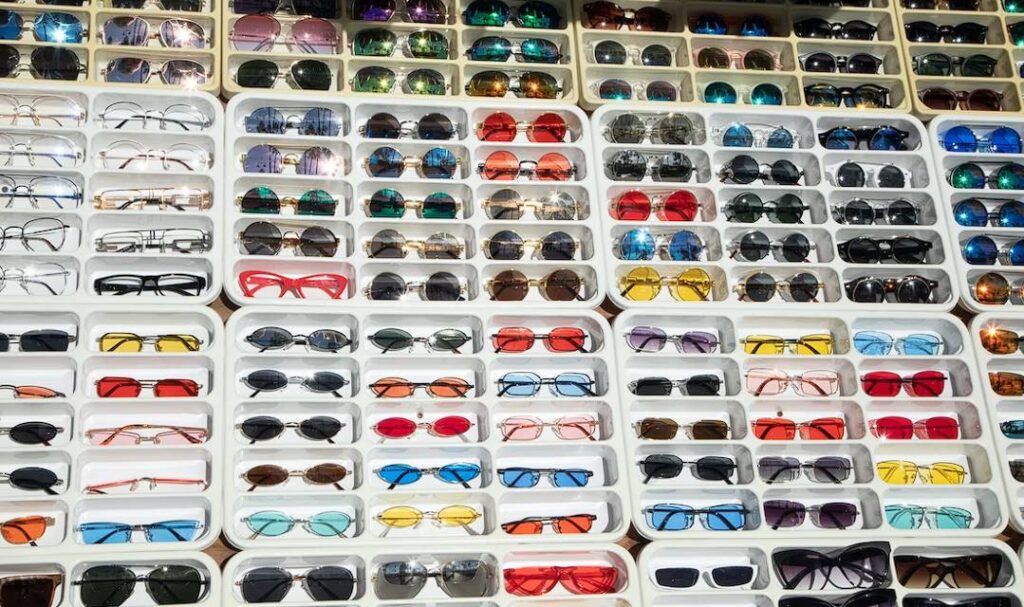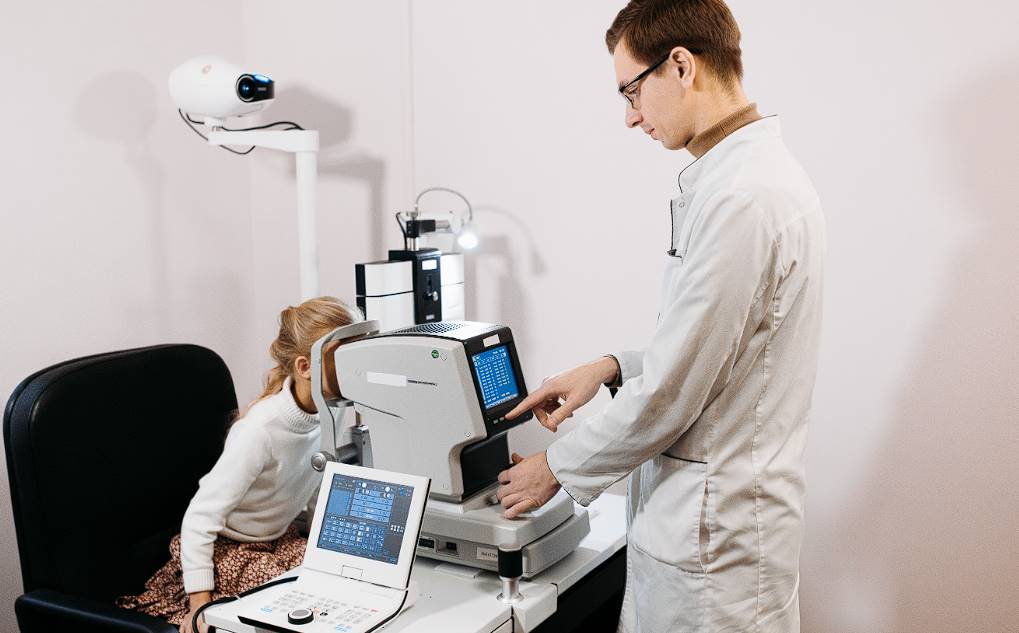Getting your eyesight corrected properly requires carefully selecting the lenses for your eyeglasses. Single vision lenses and progressive lenses are the most common types of eyeglass lenses. If you want to find the best lenses for your eyes, you should know the differences between them.
This article compares and contrasts single vision and multifocal lenses, explaining their respective functions and advantages. Exploring the world of single vision and multifocal lenses will equip you to choose the most appropriate option for clear, comfortable vision, whether you need vision correction for nearsightedness, farsightedness, or age-related presbyopia. Let's dive in and check out the differences between these two lens options so you can make a well-informed decision about your glasses.
What Are Single-Vision Lenses?
Unlike progressive or bifocal lenses, which correct both nearsightedness and farsightedness, single-vision lenses correct only one of these conditions. The degree of vision correction provided by each lens is identical. All of the lens's surface area receives the same amount of focusing power.
Most people need glasses, so it makes sense that single-vision prescription lenses would sell well. Full-frame readers are the most typical instance of this. Half-frame reading glasses, which are typically thinner, are another option. These glasses rest atop the bridge of your nose, allowing you to see both nearby and faraway objects with ease.
The optometrist may recommend single-vision lenses if you only need glasses for one purpose, like driving or reading.
What Are Multifocal Lenses?
The limitations of traditional single-vision eyewear inspired the creation of progressive or multifocal lenses. Multi-focal lenses are used in glasses that have more than one prescription. Progressive lenses are another name for multifocal lenses because of their versatility.
These lenses improve your eyesight at a wide range of distances. Therefore, progressive lenses can correct for near, far, and intermediate distance vision.
Age-related vision issues are a good candidate for this type of lens due to the gradual transition between different prescriptions. You can keep the same pair of glasses on for both near and far vision. Simply switch to your multifocal lenses for the remainder of the day.
About Common Vision Problems Corrected With Eyeglasses
Misaligned focal points are the root of many vision issues. Lenses in your eyes refract light so that it falls directly on the retina, which is sensitive to light, at the back of your eye. The retina is the light-sensitive tissue at the back of the eye, and proper refraction is essential for seeing clearly.
The lens won't work properly if your eye isn't perfectly round. This condition is known as a refractive error by optometrists. When light is bent incorrectly, it focuses either in front of or behind the retina. If your eyes aren't properly focused, you won't be able to see clearly. Glasses for correcting this refraction are required.
The most common refractive errors include myopia, hyperopia, and presbyopia (age-related loss of near vision). Myopia refers to the inability to see distant objects clearly but the ability to see nearby objects unimpaired. A too-long eyeball prevents light from focusing properly on the retina, leading to this condition.
Hyperopia, or farsightedness, causes one to have clear vision at long distances but blurred vision up close. This condition results from a short eyeball, which causes the lens to direct incoming light past the retina.
Presbyopia is a condition in which near vision deteriorates over time. People over the age of 40 are most likely to develop presbyopia. Indeed, the word "presbyopia" itself originates from the Greek for "old eye." Presbyopia, in contrast to the refractive errors that cause nearsightedness and farsightedness, results from a gradual loss of elasticity in the lens of the eye.
Optometrist Describes Monofocal, Bifocal And Trifocal Eyeglasses
The type of lenses your optometrist recommends for you to use will depend on your specific visual needs.
As the suffix "-focal" refers to "vision," monofocal literally means "single vision." All of the prescription in a pair of monofocal glasses is the same. If you are either nearsighted or farsighted, you may benefit from glasses with single vision lenses. The single vision lens enhances your clarity of vision for either near or far objects, but not both. If you're farsighted, single vision lenses, like those found in reading glasses, may be your best option.
In contrast, bifocal lenses improve your ability to see both nearby and faraway details clearly and sharply. If your presbyopia isn't too severe, bifocal lenses could improve your vision. In a bifocal lens, the upper portion of the lens is designed to focus on distant objects, while the lower portion is designed to focus on nearby ones.
A trifocal lens, with its three different lens strengths, can help you see clearly at all distances, not just up close. If your intermediate vision has been severely impaired by presbyopia, trifocal lenses may be the solution for you.
Consultation with an optometrist is recommended for deciding on the optimal lens for your eyeglasses. Your eye doctor will examine your eyes, determine what kind of glasses you need, and ensure that you have perfect vision at all distances.
Types Of Single-Vision Lenses
Previously, we discussed the various types of refractive errors that can be corrected with a single vision lens. However, it's crucial to understand that various Single Vision Lenses exist to aid in correcting vision problems. In addition, it guarantees that these various single vision lenses can give people with vision issues clearer, more comfortable vision. Listed below are the three primary uses for single-vision lenses:
Plano Lenses
All around the lens' thickness is the same in plano lenses. The lens is non-prescription because of its design. That's why you'll find it in virtually every pair of prescription sunglasses or glasses.
Concave Lens
Nikon Lenswear offers concave lenses for the treatment of nearsightedness, or Myopia. The concave lens is tapered in the middle and bulges outward towards the edges. The lens's outer edges will be thicker than its inner core in proportion to the strength of the prescription.
Convex Lens
Convex lenses were developed to help people with hyperopia see clearly without strain. Individual prescriptions can be accommodated by these lenses, which are thicker in the centre and thinner at the edges.
Nikon lenswear allows you to select the precise lens type needed to fulfil your prescription. In addition to the aforementioned parameters, your professional eye care provider can divide your Nikon Lenswear single vision lenses based on your individual prescription.
What Refractive Errors Can Single Vision Lenses Correct?
Knowing the various forms of refractive error can shed light on the operation of single vision lenses. They can be innate characteristics or acquired characteristics.
A refractive error is the most common form of vision impairment and occurs when the retina has difficulty focusing light properly due to a difference in the shape of the eye.
The following are examples of refractive errors that can be corrected by single vision lenses:
Myopia
Myopia, also known as nearsightedness, is the result of a lengthened eyeball that causes light to focus in front of the retina rather than directly on it. As a result, faraway things will appear hazy while those closer to you will be in sharp focus. Nearsightedness can be caused by inherited factors or lifestyle choices that lead to changes in corneal shape.
Hyperopia
Commonly known as hyperopia, this refractive error is the polar opposite of myopia. When the eyeball is too short from front to back, light is focused behind the retina instead of on it, resulting in hyperopia. Hyperopia, also known as farsightedness, is a refractive error that is typically present at birth but can often be corrected as a child's eyeball grows longer.
Astigmatism
Blurred or distorted vision is the result of astigmatism, which occurs when the cornea is slightly irregular in shape and causes light to bend irregularly as it enters the eye. Astigmatism is a refractive error that may be present at birth or develop in a person's formative years.
Types Of Multifocal Contact Lenses
Multifocal contact lenses can be one of two main categories.
Simultaneous Vision Design
There is a bifocal or multifocal design in these lenses. Distance or near vision refractive power is located in the optical centre of the lens. This type of multifocal lens typically consists of at least two separate zones, each with a different focal length.
Segmented Design
These lenses are designed with a distance vision zone in the upper and central portions of the lens and a near vision zone in the lower portion of the lens. A clear delineation exists between each area.
In every case, lenses with segments are made of rigid gas permeable material. Multifocal soft contact lenses can be worn at the same time.
Benefits Of Multifocal Lenses
Multifocal lenses have many advantages.
Better Vision At All Distances
With multifocal lenses, you don't need separate pairs of glasses to see clearly up close, in the middle, and far away. The ability to see clearly at a variety of distances facilitates reading, computer use, driving, and other activities.
Comfort And Convenience
Multifocal lenses save time because you only need one pair of glasses instead of several. You won't have to worry about the headache that comes from constantly adjusting your eyes to new pairs of glasses. It's also practical enough that you can get by with just one pair of eyewear for the entire day.
Reduced Eye Strain
By allowing users to see clearly at a variety of distances, multifocal lenses ease fatigue in the eyes. This alleviates the need to constantly adjust your focus between near and far, which can cause eye strain and ultimately lead to headaches and exhaustion.
Vision Issues Corrected By Bifocal Lenses
You and your eye doctor may decide that bifocal lenses are the best choice for your eyes. If you've had trouble seeing clearly because of myopia, for instance, you may have been able to get by with single vision lenses. Bifocal lenses may be necessary if you've noticed the onset of presbyopia alongside your myopia.
However, bifocal lenses can also be useful in a variety of other contexts. If a child has trouble reading the whiteboard and experiences eye strain from all the reading and writing they do in school, their doctor may recommend bifocal lenses.
Conclusion
Common types of eyewear that correct nearsightedness, farsightedness, or presbyopia brought on by ageing include single vision and multifocal lenses. Single-vision lenses only treat one of these issues, yet they improve vision just as much. Full-frame readers and half-frame reading glasses often use these lenses because they provide comfortable viewing of both close and remote things. For certain tasks, including driving or reading, optometrists may advise single-vision lenses.
However, multifocal lenses are utilised in glasses that have more than one prescription, and they can be used to correct near, far, and intermediate distance vision. This lens is ideal for anyone experiencing vision problems as a result of ageing because of the smooth progression between different prescriptions.
Misaligned foci, refractive errors, and presbyopia are all treatable with eyeglasses. Myopia, hyperopia, and presbyopia (age-related loss of near vision) are all possible outcomes of refractive defects. Depending on the wearer's demands, a specialist may suggest monofocal, bifocal, or trifocal lenses.
Plano lenses, concave lenses, and convex lenses are the three most common single-vision lens prescriptions. Most pairs of prescription sunglasses and eyeglasses have non-prescription plano lenses. People with nearsightedness use concave lenses, whereas those with farsightedness use convex ones.
Finally, if you want clear, comfortable vision, it's important to get the correct single vision or multifocal lens. Contact your local optometrist for assistance in selecting the best lenses for your eyes. Single vision lenses can cure refractive defects such myopia, hyperopia, and astigmatism. Light focuses in front of the retina in myopic eyes, making distant objects look blurry. The condition known as hyperopia develops when the eyeball is abnormally short from front to back, resulting in light focusing beyond the retina.
Blurred or distorted vision is the result of the refractive imperfection known as astigmatism. You can classify multifocal contact lenses as either simultaneous vision designs (bifocal or multifocal) or segmented designs. Advantages of these lenses include clearer vision at all distances, less time spent adjusting to new optics, less fatigue from staring at a screen, and the elimination of any preexisting vision problems. A child having trouble reading or writing because of eye strain at school could benefit from them. In conclusion, if you know how to identify and repair refractive flaws, your single vision lenses will perform much better.
Content Summary
- Single vision and multifocal lenses are the two most common types of eyeglass lenses.
- Understanding the differences between these lenses helps in choosing the best option for clear vision.
- Single vision lenses correct only one condition, either nearsightedness or farsightedness.
- They provide the same degree of vision correction throughout the lens.
- Full-frame readers and half-frame reading glasses are examples of single vision lenses.
- Single vision lenses are recommended when glasses are needed for a specific purpose like driving or reading.
- Multifocal lenses were developed to address the limitations of single vision lenses.
- They can correct near, far, and intermediate distance vision.
- Progressive lenses are another name for multifocal lenses.
- Multifocal lenses are beneficial for age-related presbyopia due to their versatility.
- Age-related presbyopia is the gradual loss of near vision over time.
- Misaligned focal points cause many vision issues.
- Refraction is essential for clear vision, and glasses help correct refractive errors.
- Myopia, hyperopia, and presbyopia are common refractive errors.
- Myopia is the inability to see distant objects clearly.
- Hyperopia causes clear vision at long distances but blurred vision up close.
- Presbyopia is the age-related loss of near vision.
- Monofocal lenses have the same prescription throughout and enhance clarity for either near or far objects.
- Bifocal lenses improve vision for both nearby and faraway objects.
- Trifocal lenses have three different lens strengths and help with clear vision at all distances.
- Consultation with an optometrist is recommended for choosing the optimal lens.
- Different types of single-vision lenses exist, including plano, concave, and convex lenses.
- Plano lenses are non-prescription and commonly found in sunglasses.
- Concave lenses correct nearsightedness by tapering in the middle.
- Convex lenses help people with hyperopia see clearly without strain.
- Nikon Lenswear offers a range of single vision lenses based on individual prescriptions.
- Single vision lenses can correct various refractive errors, including myopia, hyperopia, and astigmatism.
- Refractive errors can be innate or acquired characteristics.
- Myopia results from a lengthened eyeball, causing light to focus in front of the retina.
- Hyperopia occurs when the eyeball is too short, focusing light behind the retina.
- Astigmatism causes blurred or distorted vision due to irregular corneal shape.
- Multifocal contact lenses can be simultaneous vision design or segmented design.
- Simultaneous vision lenses have different focal lengths in separate zones.
- Segmented lenses have distinct areas for distance and near vision.
- Rigid gas permeable material is used for segmented lenses.
- Multifocal lenses provide clear vision at all distances, eliminating the need for multiple pairs of glasses.
- They offer comfort and convenience, saving time and reducing the need for constant adjustments.
- Multifocal lenses reduce eye strain by allowing clear vision at different distances.
- Bifocal lenses can be beneficial for myopia and presbyopia together.
- Bifocal lenses may be recommended for children experiencing eye strain during reading and writing.
- The choice between single vision and multifocal lenses depends on individual visual needs.
- Choosing the right lens type is crucial for clearer and more comfortable vision.
- Optometrists examine eyes and determine the appropriate lens type.
- Single vision lenses are effective for specific purposes like driving or reading.
- Multifocal lenses are versatile and correct vision at various distances.
- Refractive errors affect the shape of the eye and can be corrected with lenses.
- Understanding refractive errors helps in understanding the operation of single vision lenses.
- Myopia, hyperopia, and astigmatism are examples of refractive errors.
- Multifocal lenses offer the benefits of better vision at all distances, comfort, and reduced eye strain.
- Bifocal lenses are useful for correcting myopia, presbyopia, and eye strain in children.
Frequently Asked Questions
Single vision lenses are lenses that have a uniform prescription power throughout the entire lens surface. They are primarily used to correct refractive errors like nearsightedness (myopia) or farsightedness (hyperopia). Single vision lenses are designed to provide clear vision at a specific distance, either for near or distance vision.
Multifocal lenses, also known as progressive lenses or bifocals, are lenses that offer multiple prescription powers within a single lens. They are designed to correct both distance and near vision in individuals with presbyopia, a condition that commonly occurs with age and affects the ability to focus on nearby objects.
The key difference lies in their ability to provide multiple prescription powers. Multifocal lenses have a gradual transition from the distance prescription at the top of the lens to the near prescription at the bottom, allowing for seamless vision correction at various distances. Single vision lenses, on the other hand, have a single prescription power throughout the lens.
Yes, multifocal lenses can correct both nearsightedness and farsightedness. They are designed to provide clear vision for different distances, including near, intermediate, and distance vision. The multifocal design allows for a smooth transition between these prescription powers.
The choice between single vision and multifocal lenses depends on your specific visual needs. If you require correction for only one distance, such as near or distance vision, single vision lenses may be sufficient. However, if you have presbyopia or need correction for both near and distance vision, multifocal lenses provide the convenience of a seamless transition between different distances.










